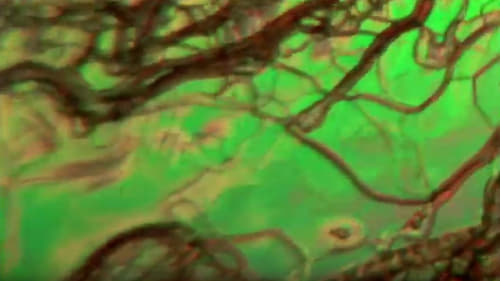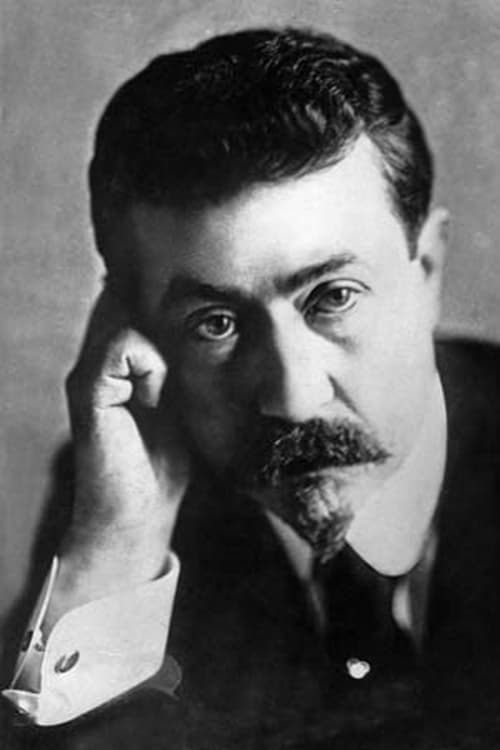Daphnia (1928)
Gênero : Documentário
Runtime : 8M
Director : Jean Painlevé
Sinopse
Titles in French and English help us know what we're seeing. In all waters, daphnia abound. They are crustaceans about 2 ml long, with one eye that turns in all directions. Antennae enable daphnia to move: in a close up magnified 150,000 times, we see the muscles of the antennae pulse. We see the eye, the nerve mass, blood globules, and the heart, beating several times per second. The intestine forms a long line. All are females; eggs develop above the intestine. New generations come rapidly. Inside each daphnia are tiny infusoria; we watch them clean the intestine of a dead daphnia. An enemy, the hydra, approaches. A daphnia dies, but many remain.

Uma análise de perto dos ouriços de areia e de rocha. Na costa, Jean Painlevé escava um ouriço de areia enquanto olhamos de perto.

Este filme é sobre três animais: Hyas, Macropodia e vermes-espanadores – dois crustáceos e um verme. Todos eles apresentam uma plumagem surpreendente e espetacular.

With a similar dreamy mood like its predecessor "Take the 5:10 to Dreamland" (1976) this clip starts with a boy getting into his bed. The camera zooms in into the boy's mind and a slow, sad waltz (i.e."Valse Triste") accompanies images of a locomotive, a miner, the globe, the sky, a sheep heard, etc. Disparate elements, but if one concentrates only at the movement of the figures, one can perceive a commotion, slowly livening up: The starting wheels of the heavy locomotive, the tired miner pushing the heavy cart of coal bricks, the globe smoothly turning around and around, the clouds imperceptibly floating in the sky, the sheep idly moving in the herd, etc. We reach the first climax when a mannequin opens her coat like a flower. The second big crescendo spurts out from a "water hose", after watching schoolgirls doing gymnastics for quite a while. A sad, but nostalgic aftertaste lingers in the end when funeral cars drive away through a flooded area…

This meditation takes its visual imperatives from the occasion of Mesa Verde.

A short film by Stan Brakhage featuring music by Rick Corrigan.

A short film by Hollis Frampton.

Title cards introduce images we watch without narration; they are displays of shape and color. François de Roubaix's electronic music accompanies these images, photographed under a polarizing microscope. The crystals appear to move like tiny organisms: small four-part fans share the frame with flowing lines of pink. Multiple patterns appear side by side.

An educational film, a movie through a microscope, in two parts. Within minutes after the egg drops in the water, fertilization occurs and contractions start. Soon, in a fertilized egg, we see the germinal disc divide into two blastomeres. Divisions continue; contractions re-occur at the cap as it covers the egg. Title cards in French tell us what to watch for. Muscular movements and circulation appear; the heart beats. In part two, we see blood circulation begin as red cells develop on the surface of the yoke. They mass toward the heart. Arteries form, blood flows. The egg hatches and blood flows to new areas.

Director Joseph Cornell evokes the nostalgia of childhood by filming a children's party.

Hollis Frampton alludes to origins and creation as he cuts between a garden featuring a bride and groom and an 1902 film entitled "A Little Piece of String."

A day at the carnival — sensational tent shows where miracles can be seen for the price of admission, boisterous noise of crowds and barkers, shrill and gaudy circus music, the violence of the street ten-fold. This is the substance of Everything Turns, Richter’s first sound film. At its premier at Baden-Baden Richter got into a fight with two Nazi officials who disliked the film's ‘modernism.’ Yet in 1936 it was awarded first prize for artistic merit by the Nazis, with Richter’s name suppressed from the credits. He had long since left Germany.

A short surreal animation created with fashion magazine clippings and sound collages.

Says Fred Camper of the film: "Invited to Riverside, California, Brakhage, under the mistaken impression that it was a desert, was planning a desert movie when he arrived to discover an unattractive suburban landscape. So he decided to make, and shoot, a desert on his motel room table".

An experimental animated short film in which a piano plays a song and the keys, hammers, and various other parts of the piano are different colors.

In GLORIA! Frampton juxtaposes nineteenth-century concerns with contemporary forms through the interfacing of a work of early cinema with a videographic display of textual material. These two formal components (the film and the texts) in turn relate to a nineteenth-century figure, Frampton's maternal grandmother, and to a twentieth-century one, her grandson (filmmaker Frampton himself). In attempting to recapture their relationship, GLORIA! becomes a somewhat comic, often touching meditation on death, on memory and on the power of image, music and text to resurrect the past.

A short film by Stan Brakhage.

Jean Painlevé se senta com crianças em um parque parisiense e conversa sobre pombos. Primeiro, sobre a aparência física (olhos, asas e cauda, sem esquecer a cor) e suas variedades.

An experimental film by Stan Brakhage. Frenetic editing and hand-painted film accompany scenes of dogs and raccoons, snakes and mice.




